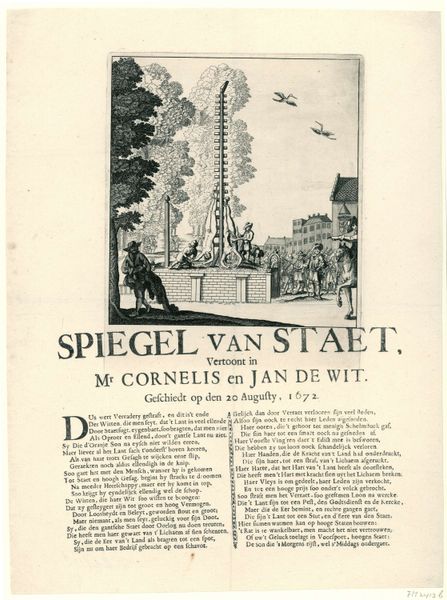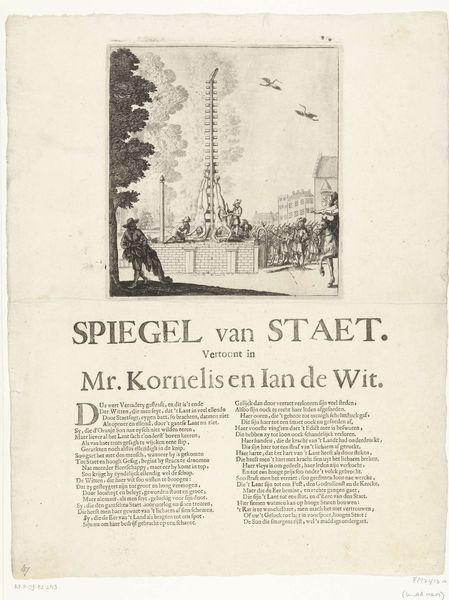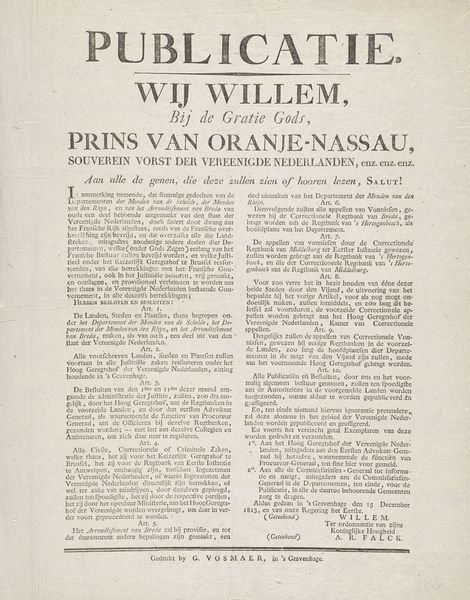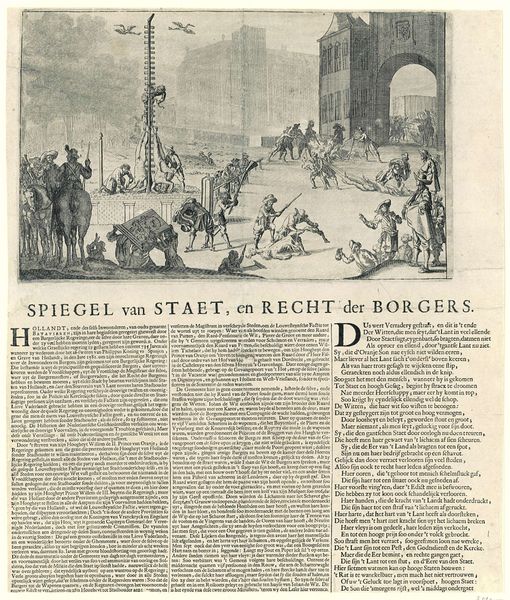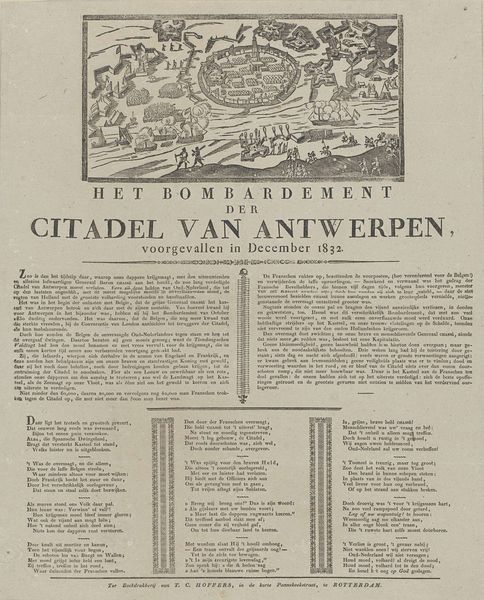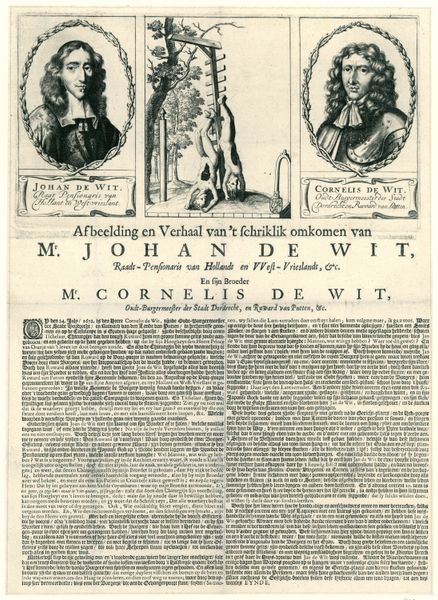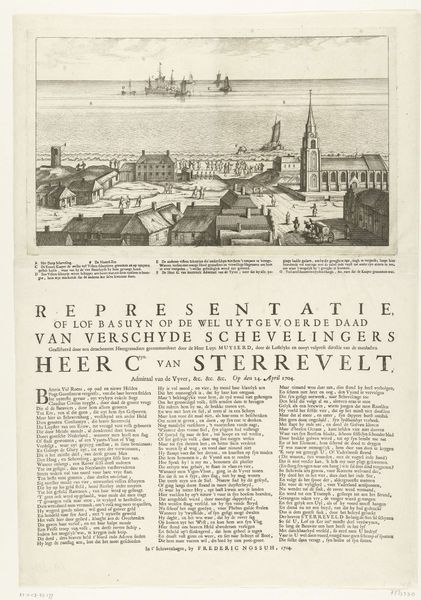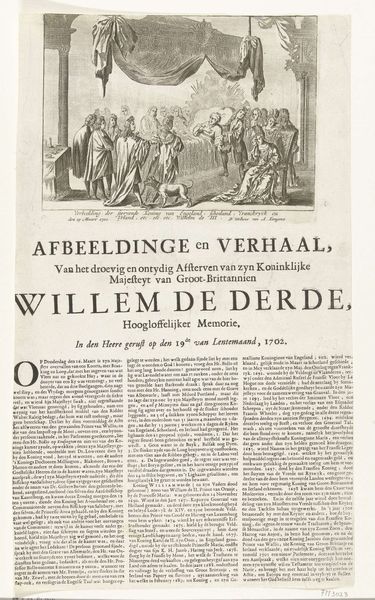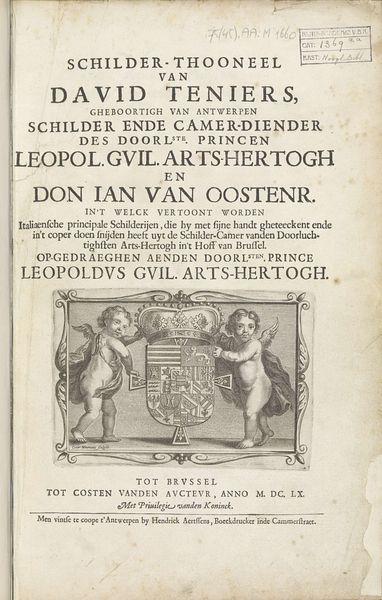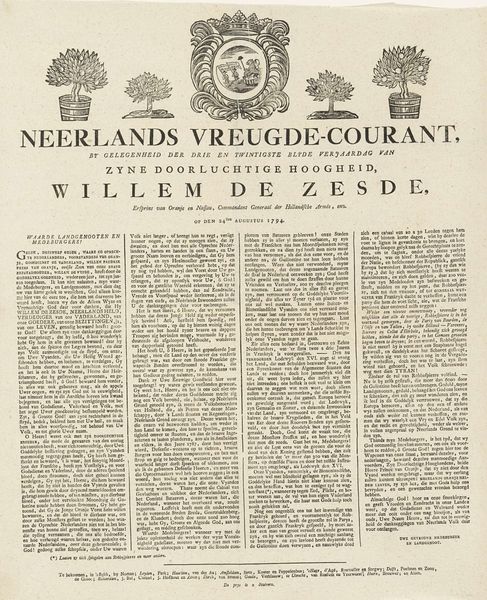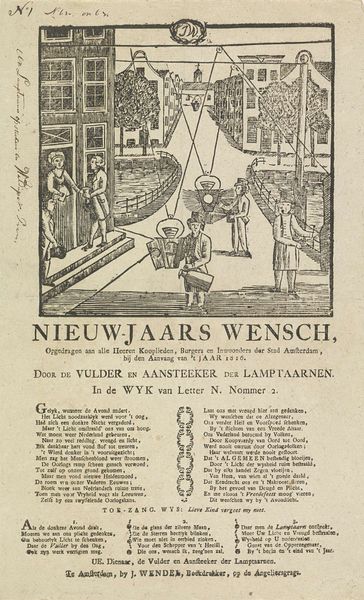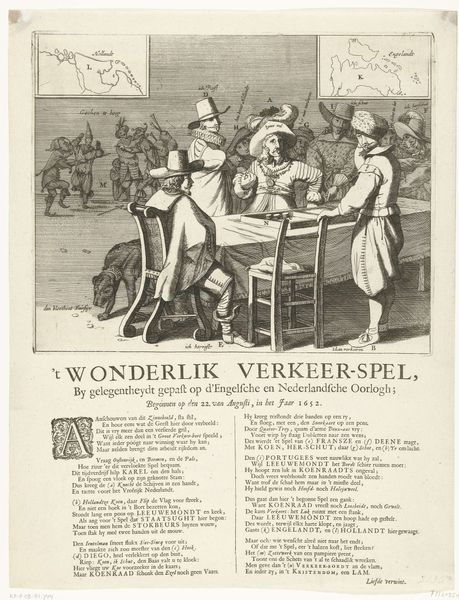
print, engraving
#
script typeface
#
aged paper
#
hand-lettering
#
baroque
# print
#
old engraving style
#
hand drawn type
#
figuration
#
personal sketchbook
#
hand-drawn typeface
#
stylized text
#
history-painting
#
handwritten font
#
engraving
#
historical font
Dimensions: height 401 mm, width 281 mm
Copyright: Rijks Museum: Open Domain
This print, made in 1672 by an anonymous Dutch artist, depicts the gruesome murder of the brothers de Witt. It’s rendered in engraving, a printmaking process that involves carving lines into a metal plate, applying ink, and pressing it onto paper. Look closely, and you can see that the stark contrast between light and shadow heightens the drama, emphasizing the brutality of the event. The linear quality of the engraving lends a graphic, almost journalistic feel to the image. This aesthetic flattens the scene into a stark depiction of political violence, reducing the victims to mere objects of public display. The print speaks volumes about the social and political tensions of the time, a period marked by intense factionalism. By choosing engraving—a relatively accessible medium—the artist ensured that the image could be widely disseminated, fueling public outrage or, conversely, serving as a cautionary tale. Ultimately, this print challenges our conventional understanding of art by revealing its power as a tool for political commentary and social manipulation.
Comments
No comments
Be the first to comment and join the conversation on the ultimate creative platform.
